AI and Creativity: Can Machines Be Creative?

The question of whether machines can genuinely be creative has ignited a multifaceted debate that spans across various domains including art, music, and literature. AI algorithms have demonstrated remarkable capability in generating works that can rival human creations, yet the essence of creativity—often linked to human emotions, consciousness, and subjective experiences—remains a contentious issue. As AI continues to analyze patterns and produce novel outputs, it challenges our traditional understanding of creativity and poses intriguing questions about the role of human consciousness in artistic expression. What implications does this hold for the future of creativity and innovation?
AI and Creativity: Can Machines Be Creative? Audio file.
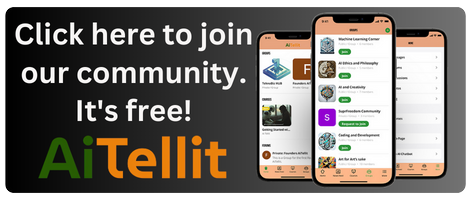
AI-Generated Art
AI-generated art, created using advanced algorithms and machine learning models, represents a significant technological advancement in the field of creativity. By leveraging deep learning algorithms, AI systems can analyze vast datasets containing various artistic styles, techniques, and patterns. This enables them to generate unique artistic outputs, ranging from paintings and sculptures to digital artwork and installations. For instance, AI models like GANs (Generative Adversarial Networks) can produce novel pieces by learning from and mimicking existing art forms.
The creative potential of AI-generated art has garnered substantial attention, particularly as some of these pieces have been sold at auctions for significant amounts. This commercial success has intensified discussions about the role of AI in the creative process and its impact on the traditional art world. While proponents highlight the innovative capabilities and new forms of expression that AI brings to art, critics question the authenticity and intrinsic value of machine-generated works.
The debate hinges on whether creativity, traditionally viewed as a uniquely human trait, can be authentically replicated by algorithms. As AI continues to evolve, its ability to push the boundaries of artistic expression will likely further challenge conventional notions of creativity and authorship in the art world.
AI-Composed Music
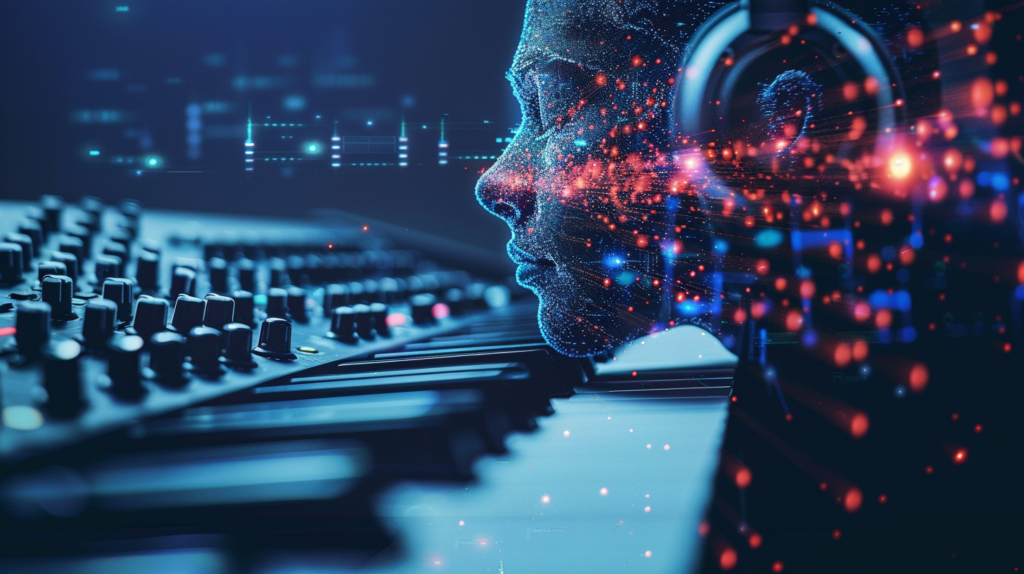
AI-composed music, leveraging sophisticated algorithms, has emerged as a transformative force in the music industry, capable of generating original compositions across a diverse range of genres. These algorithms meticulously analyze vast datasets of existing music to learn intricate patterns, styles, and structures, enabling the creation of new and innovative musical pieces.
The scope of AI-generated music spans from classical symphonies to contemporary electronic tracks, illustrating the remarkable versatility and depth of AI’s musical capabilities.
AI systems can autonomously compose entire symphonies or albums, demonstrating an unprecedented level of complexity and nuance. This technological advancement prompts a reevaluation of traditional notions of creativity and the role of machines in the artistic process.
Key aspects of AI-composed music include:
- Algorithms: These are the core mechanisms driving the analysis and generation of music, learning from extensive data.
- Patterns and Styles: AI identifies and replicates intricate musical patterns and styles from various genres.
- Structures: The ability to understand and generate complex musical structures is fundamental to creating cohesive compositions.
- Creativity: The use of AI in music challenges conventional definitions of creativity and artistic authorship.
Made by Udio AI:
AI-Authored Literature
The advent of AI-authored literature, facilitated by advanced machine learning algorithms, has revolutionized the landscape of writing by producing novels, poems, and articles that closely mimic human creativity. AI algorithms have enabled machines to analyze vast amounts of text data, allowing them to generate coherent and stylistically diverse literary works. Notably, the novel ‘The Day a Computer Writes a Novel’ exemplifies this capability, having advanced through the initial round of a literary award competition.
The interplay between human and machine in authorship is particularly intriguing. The Turing Test for AI creativity in literature challenges the ability to distinguish between human-produced and AI-produced texts. This raises pertinent questions about the nature of creativity, authorship, and the future of storytelling.
| Key Aspect | Human Authorship | AI-Authored Literature |
|---|---|---|
| Creativity Source | Human Imagination | Machine Learning |
| Data Analysis | Limited by Capacity | Vast Text Data |
| Style Mimicry | Human Constraints | Algorithmic Precision |
| Originality | Subjective | Pattern-Based |
| Recognition | Established | Emerging |
AI has produced creative works that blur the lines between traditional literature and machine-generated content, prompting a re-evaluation of what constitutes genuine creativity. As AI continues to evolve, its role in literature and storytelling is likely to become increasingly significant.

AI-Driven Innovation
In the realm of business, AI-driven innovation leverages advanced algorithms to analyze extensive datasets, uncovering creative solutions that enhance decision-making and optimize product design. Machine learning algorithms play a pivotal role in this process by identifying patterns that might elude human analysts, thereby offering novel perspectives on product features and functionalities.
AI-powered tools facilitate this innovation across various industries by enabling companies to streamline processes and enhance productivity. These tools not only automate routine tasks but also provide insights that can significantly influence business strategies and technological advancements.
For example, AI-driven innovation has enabled:
- Enhanced predictive analytics for market trends and consumer behavior
- Automated design optimization for more efficient product development
- Real-time data processing to improve operational efficiencies
- Advanced decision-support systems for strategic planning
The intersection of AI and creativity in innovation challenges traditional methods, fostering a dynamic environment where businesses can rapidly adapt to changing market conditions. By integrating AI-powered tools, organizations can transform raw data into actionable insights, driving forward-thinking business strategies. Ultimately, these technological advancements are reshaping the landscape of modern industry, highlighting the indispensable role of AI in fostering continuous improvement and innovation.
Copyright and Ownership
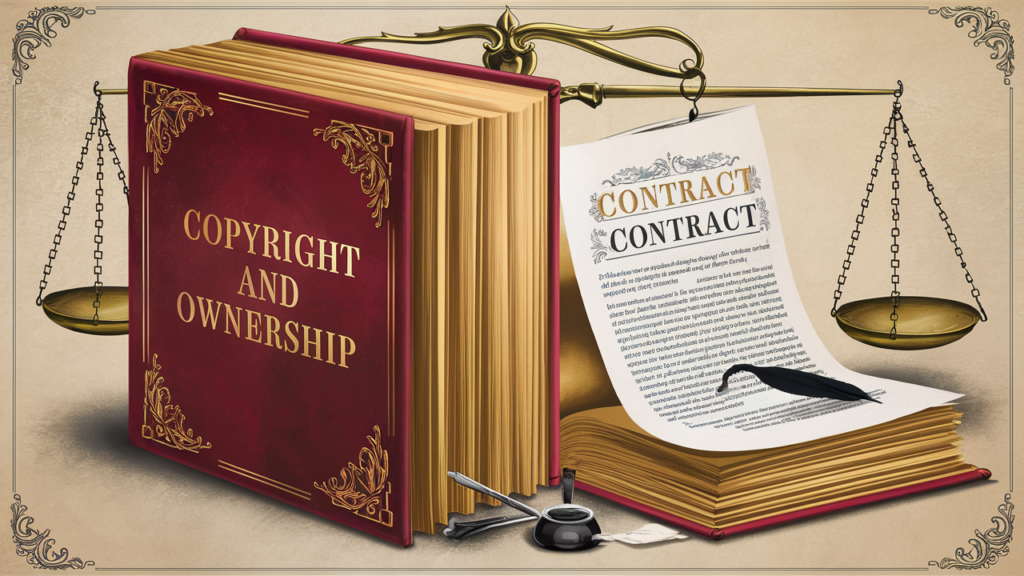
As AI continues to drive innovation across industries, it simultaneously raises complex questions about copyright and ownership of AI-generated content. The advent of AI-generated art challenges traditional notions of intellectual property rights, as determining the rightful owner of such creations becomes increasingly convoluted. The blurred lines of authorship complicate matters of attribution and royalties, necessitating a reevaluation of existing legal frameworks.
| Aspect | Challenge | Implication |
|---|---|---|
| Authorship | Blurred lines between human and AI | Unclear who deserves attribution |
| Intellectual Property | Ambiguity in ownership rights | Difficulty in assigning intellectual property |
| Legal Frameworks | Outpaced by rapid AI advancements | Inadequate regulations and guidelines |
Legal uncertainties abound as copyright law struggles to keep pace with the rapid advancements in AI creativity. Current regulations often fall short in providing clear guidelines on the ownership and protection of AI-generated art. This legal ambiguity not only affects the creators but also poses potential risks for industries reliant on AI for content generation.
Establishing robust legal frameworks and regulations is essential to navigate the evolving landscape of copyright and ownership in AI-generated content. This will ensure that intellectual property rights are clearly defined, authorship is properly attributed, and royalties are fairly distributed, fostering a more secure and equitable creative ecosystem.
Authenticity of Creativity
Assessing the authenticity of AI-generated creativity demands a critical examination of the underlying data-driven processes and algorithmic dependencies that differentiate machine output from human artistic expression. Authenticity in creativity is often linked to the human touch—rooted in emotions, subjective experiences, and consciousness—which machines inherently lack. AI’s reliance on learned patterns and predefined rules raises questions about the originality and genuine innovation of its outputs.
The debate around machine creativity versus human creativity often revolves around several key points:
- Human Emotions: Authentic creativity is deeply intertwined with human emotions, something machines cannot genuinely replicate.
- Subjective Experiences: Human creativity is subjective, shaped by personal experiences and perspectives, elements absent in AI.
- Originality: AI’s outputs are generated based on existing data, which may limit true originality and innovation.
- Interplay of Elements: The complex interplay between human consciousness and creativity is challenging to mimic through algorithmic patterns.
While AI can generate impressive and sometimes innovative outputs, the absence of emotional depth and subjective experience fundamentally differentiates it from human creativity. This dichotomy underscores the ongoing debate about the authenticity of machine-generated creative works, highlighting the nuanced interplay between technological capabilities and the essence of human artistic expression.
Creativity and Consciousness
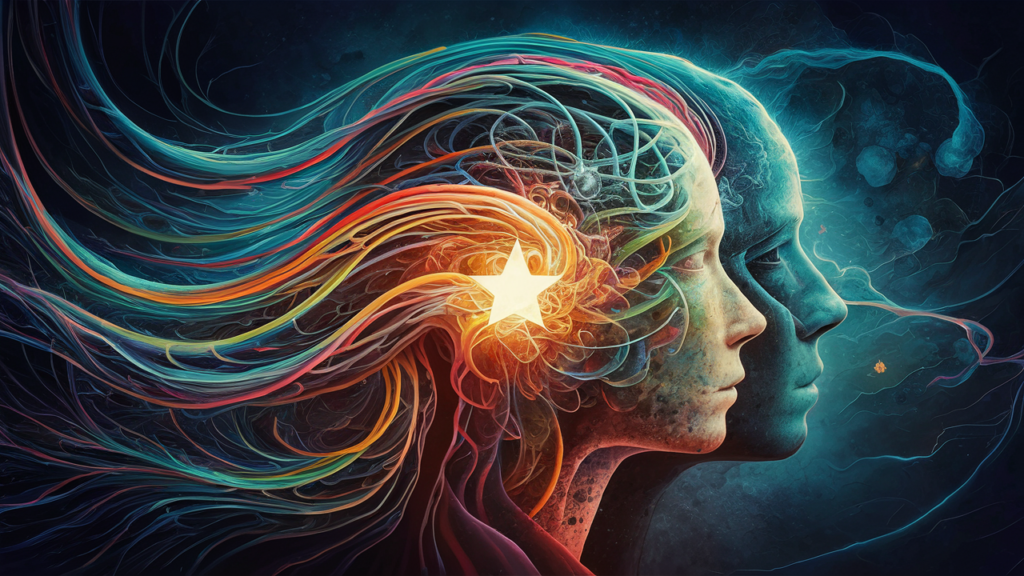
The intricate relationship between creativity and consciousness underscores a fundamental distinction between human artistic output and AI-generated works. Human creativity is deeply intertwined with consciousness, which encompasses emotions and personal experiences that shape the creative process. This subjective lens allows humans to produce art that is not only imaginative but also rich in emotional depth and personal significance.
In contrast, machines operate based on algorithms, data patterns, and learned rules. Despite the sophistication of these algorithms, machines lack consciousness and emotional depth, which inherently limits their capacity for genuine creativity. AI-generated art is a product of data-driven processes rather than the nuanced interplay of an individual’s emotions and experiences.
Consciousness provides humans with the unique capability for imaginative expression, as it enables them to draw on their internal states and subjective experiences. This results in art that resonates on an emotional level, reflecting the artist’s personal journey and worldview.
Conversely, an AI system can mimic styles and generate novel combinations of elements, yet it remains devoid of the conscious awareness that imbues human art with its profound and multifaceted character. Thus, the absence of consciousness in machines delineates a clear boundary in the realms of creative expression.
Future of AI Creativity
Advancements in AI creativity are poised to significantly transform the future landscape of creative industries by challenging traditional notions of artistic expression and human-machine collaboration. This transformation is driven by AI’s increasing capacity to produce innovative outputs and redefine what constitutes creative work. As AI systems become more sophisticated, they will continue to push the boundaries of creativity, particularly in the realm of machine-generated art.
The implications of AI creativity extend across diverse fields, including music, art, literature, and design. As AI-generated content becomes more prevalent, it will likely prompt a reevaluation of the role of human artists and the value of human creativity. This shift could lead to new forms of human-machine collaboration that combine the strengths of both entities.
- AI-generated music compositions: Already, AI systems can create original pieces that rival human composers.
- Visual arts: Algorithms are producing paintings and digital art that challenge traditional aesthetics.
- Literature: AI is writing coherent narratives and poetry, expanding the possibilities for storytelling.
- Design: Machine learning models are generating innovative architectural and product designs.
The future of AI creativity holds vast potential for reimagining artistic expression and the creative industries. These developments will necessitate ongoing discussions about the ethical, cultural, and economic implications of AI-driven creativity.

Frequently Asked Questions
Can a Robot Be Creative?
Yes, robots can exhibit creativity through machine learning and neural networks, enabling algorithmic creativity and computational imagination. While digital artistry and creative robotics demonstrate robotic innovation, they lack the subjective depth of human cognitive computing and artificial inspiration.
Can AI Demonstrate Creativity?
AI can demonstrate creativity through neural networks and creative algorithms, employing machine imagination and generative models. Computational creativity and artistic coding facilitate creative synthesis, positioning AI as a digital muse in algorithmic art and AI inspiration.
Can Autonomous Machines Be Creative and Truly Create Art?
Autonomous machines can indeed create art through machine learning, neural networks, and generative models. While creative algorithms and style transfer enable artistic interpretation, the emotional expression often remains limited, necessitating human-machine collaboration to fully realize digital mediums’ potential.
Can AI Replace Creatives?
AI cannot replace creatives due to the unique human touch, creative intuition, and artistic empathy essential for authentic expression. While AI offers collaboration potential, ethical considerations and economic impact underscore the originality debate and creative boundaries.
Conclusion
The debate on AI and creativity underscores the complexity of defining creativity itself. While AI can generate art, music, and literature through sophisticated algorithms, the absence of human emotions and consciousness raises questions about the authenticity of such creations.
The intersection of AI and creativity challenges traditional paradigms, necessitating further exploration into the role of subjective experience in artistic expression. Future advancements in AI may further blur these boundaries, prompting continuous reassessment of what constitutes true creativity.




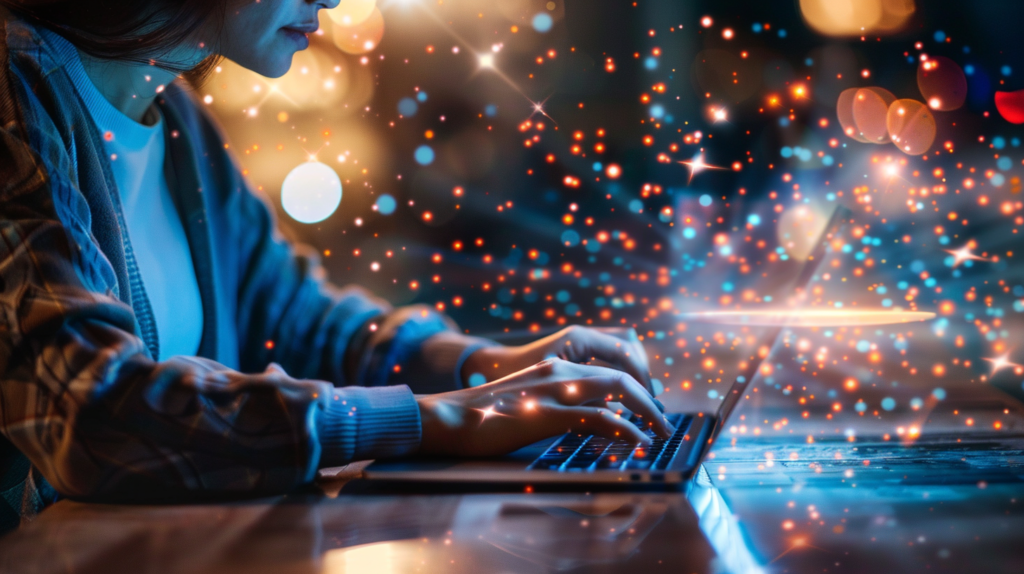
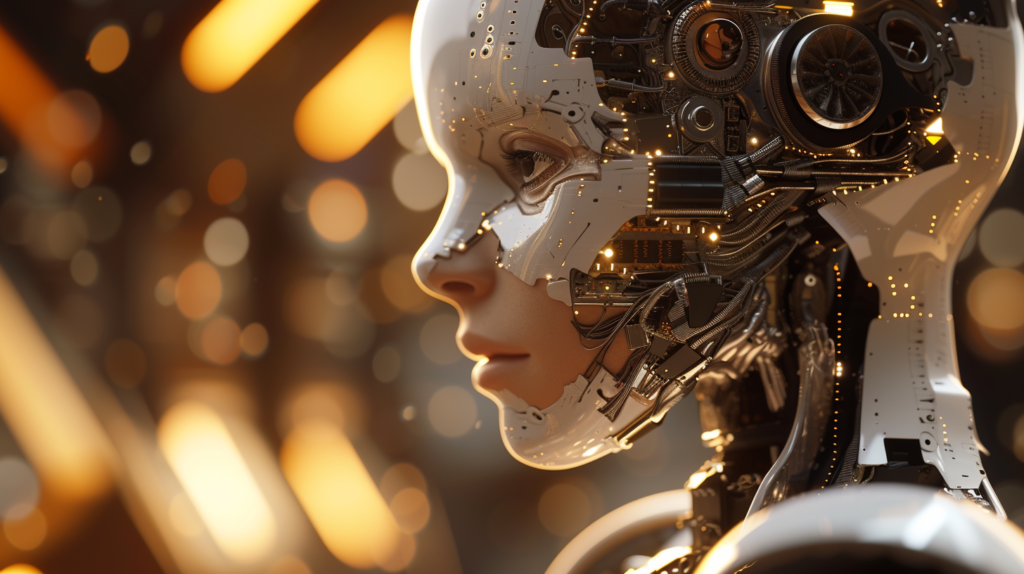
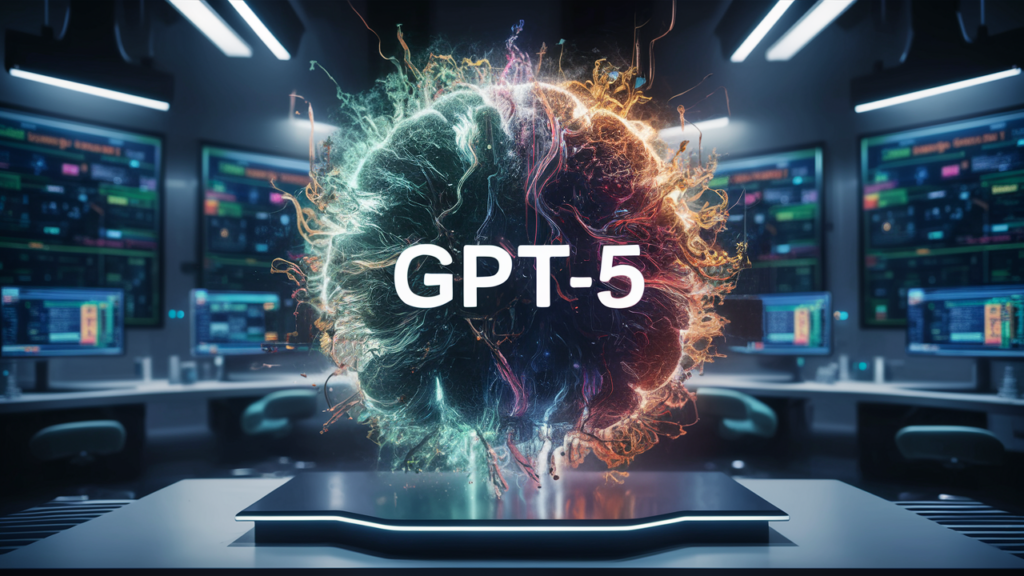
[…] original, having strong feelings, and being able to look at things from a different point of view. AI can copy styles from different art movements, but it doesn’t have a mind or personal experience, which many people say are necessary for real creativity. DeepDream and other AI-generated […]